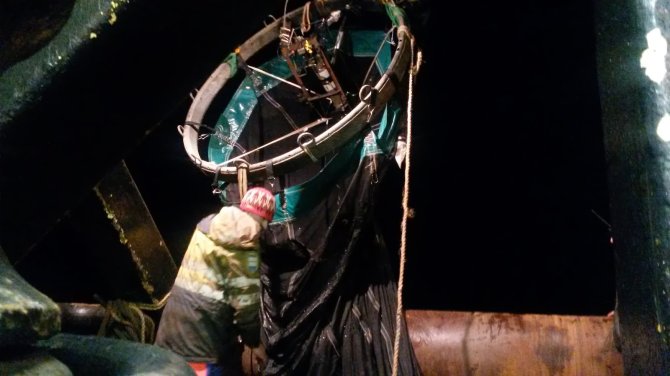
International Bottom Trawl Survey (IBTS)
Annually, from the end of January to early March, the International Bottom Trawl Survey (IBTS) takes place in the North Sea, Kattegat and Skagerrak. The objective is to collect data for the assessment of fish stocks such as cod and herring and to investigate changes in the ecosystem. Researchers from Wageningen Marine Research blog from the research vessel about their findings.
In 2023, the IBTS will take place from 23 January to 24 February.
Fishing according to a fixed grid
The sampled area is divided into a grid of so-called ICES squares, areas of approximately 56 x 56 km, and each area is fished by two different vessels according to a standard protocol. During the day, fishing is done with a standard bottom trawl with a narrow mesh (20mm) and a net opening of about 30 meters wide and 5 meters high. Each trek lasts half an hour and once the catch is on board, it is sorted completely. The length composition of all fish species caught is determined and biological data such as weight, sex, maturity and age are also collected for the important commercial species.

New year classes of six species
An important aspect of the research is to determine the growth of annual herring, sprat, cod, whiting, haddock and Norway pout. Based on a provisional index calculated from the IBTS catches, a first impression is obtained of the new annual class of these six species. The final index is used as a "tuner" by various assessment working groups when estimating the total size of the stock. Herring larvae In the evening and at night, the water column is sampled by all research vessels with a plankton net (the MIK, see photo). This is used to fish for herring larvae (0-year-olds) to get an indication of the new annual class of herring.
International research
The IBTS forms the basis for various research into changes in the North Sea ecosystem. This international stock survey has taken place annually since 1966 and is coordinated by ICES (International Council for Exploration of the Seas).